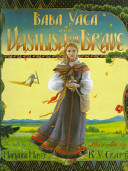
A retelling of the old Russian fairy tale in which beautiful Vasilisa uses the help of her doll to escape from the clutches of the witch Baba Yaga, who in turn sets in motion the events which lead to the once ill-treated girl’s marrying the tzar.

A retelling of the old Russian fairy tale in which beautiful Vasilisa uses the help of her doll to escape from the clutches of the witch Baba Yaga, who in turn sets in motion the events which lead to the once ill-treated girl’s marrying the tzar.
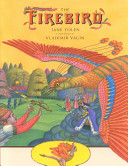
A retelling of the Russian folktale in which Prince Ivan encounters the magical Firebird who helps him defeat the evil Kostchei.
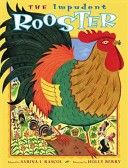
Using his amazing swallowing ability, a rooster foils the evil plans of a greedy nobleman and brings back riches to his poor master.

In this Romanian folk version of the Noah story, getting the animals to march, two by two, onto the ark is the easy part–it was persuading his wife to come aboard that gave Noah a headache. And when he snapped, “Oh, you devil, come in!,” that gave the Devil himself just the invitation he needed. Once aboard, in the shape of a mouse, the Devil gnawed a hole in the ark, to sink it beneath the flood.
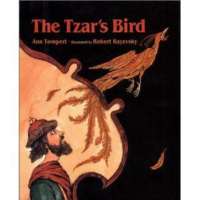
A tzar’s fear of going to the edge of the world grows when Baba Yaga threatens him, but in time he learns that fear of the unknown is a senseless fear.
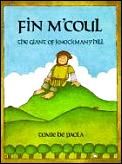
Fin M’Coul’s wife, Oonagh, helps him outwit his arch rival, Cucullin.
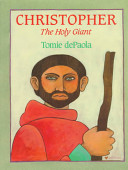
As Reprobus carries a child across a river one stormy night, the boy gets heavier and heavier until Reprobus feels he is carrying the world on his shoulders–thus goes the legend of the name Christ-bearer, or Christopher.
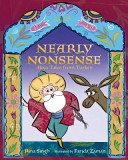
Nasrudin Hoja was a mullah (teacher) in Turkey. He was a busy man – he worked in a vineyard, gave sermons at the mosque, and was sometimes even a judge. He did all of this with a nagging wife, a constant stream of uninvited visitors, and many animals. Although Hoja’s life wasn’t easy, his heart was always light and his observations about life held a witty twist. For instance, when his donkey got lost, his neighbors offered sympathy, but Hoja found the bright side: “Imagine if I were riding the donkey at the time. I’d be lost too!”Though the ten Hoja stories presented by Rina Singh and richly illustrated by Farida Zaman are funny, each one contains such insight into human nature that Sufi teachers use them to illustrate their teachings. Traditional Turkish Hoja stories are much-loved throughout Asia, and Nearly Nonsense brings them to a North American readership sure to enjoy them and, through laughter, to learn from them.
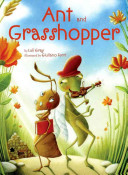
When Ant spies a carefree Grasshopper playing a fiddle outside on the lawn, Ant immediately harrumphs at the insect’s foolishness and continues to go about his very serious business of gathering and counting his food for the winter. But Ant finds Grasshopper’s music and whimsy more catchy than he’d like, and soon he’s distracted by his own rhyming and doodling! When the harsh winter hits and Ant finds Grasshopper cold and hungry in the snow, he can’t help but bring him inside. Only after opening his home to Grasshopper does Ant realize that music, dancing, and laughter have their place in his life, too. Luli Gray’s funny twist on this fable will have readers giggling and singing. With Giuliano Ferri’s lush and whimsical illustrations, this book is both heartwarming and lovely to behold.
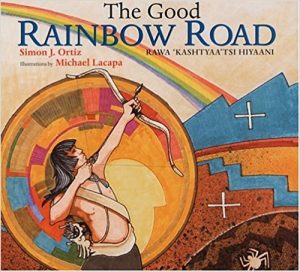 This is the story of two courageous boys and of how they saved their village, Haapaahnitse, Oak Place, and it lies at the foot of a mountain. Once there was a lake and a stream nearby, but they have dried up. The land has become barren and dry. Two brothers, Tsaiyah-dzehshi, whose name means First One, and Hamahshu-dzehshi, Next One, are chosen for a westward trek to the home of the Shiwana, the Rain and Snow Spirits, to ask them to bring the gift of water to the village again. The brothers cross deserts and mountains on an arduous journey until they are finally stopped short by a treacherous canyon filled with molten lava. “The Good Rainbow Road” tells how the brothers overcome this last challenge and continue on to their destination.
This is the story of two courageous boys and of how they saved their village, Haapaahnitse, Oak Place, and it lies at the foot of a mountain. Once there was a lake and a stream nearby, but they have dried up. The land has become barren and dry. Two brothers, Tsaiyah-dzehshi, whose name means First One, and Hamahshu-dzehshi, Next One, are chosen for a westward trek to the home of the Shiwana, the Rain and Snow Spirits, to ask them to bring the gift of water to the village again. The brothers cross deserts and mountains on an arduous journey until they are finally stopped short by a treacherous canyon filled with molten lava. “The Good Rainbow Road” tells how the brothers overcome this last challenge and continue on to their destination.
“The Good Rainbow Road” is presented in Keres, the language of Acoma Pueblo and six other Pueblo communities in New Mexico, and in English, with an additional Spanish translation in the back of the book. It is published in cooperation with Oyate, a community-based Native organization dedicated to the continuation of traditional literatures and histories.